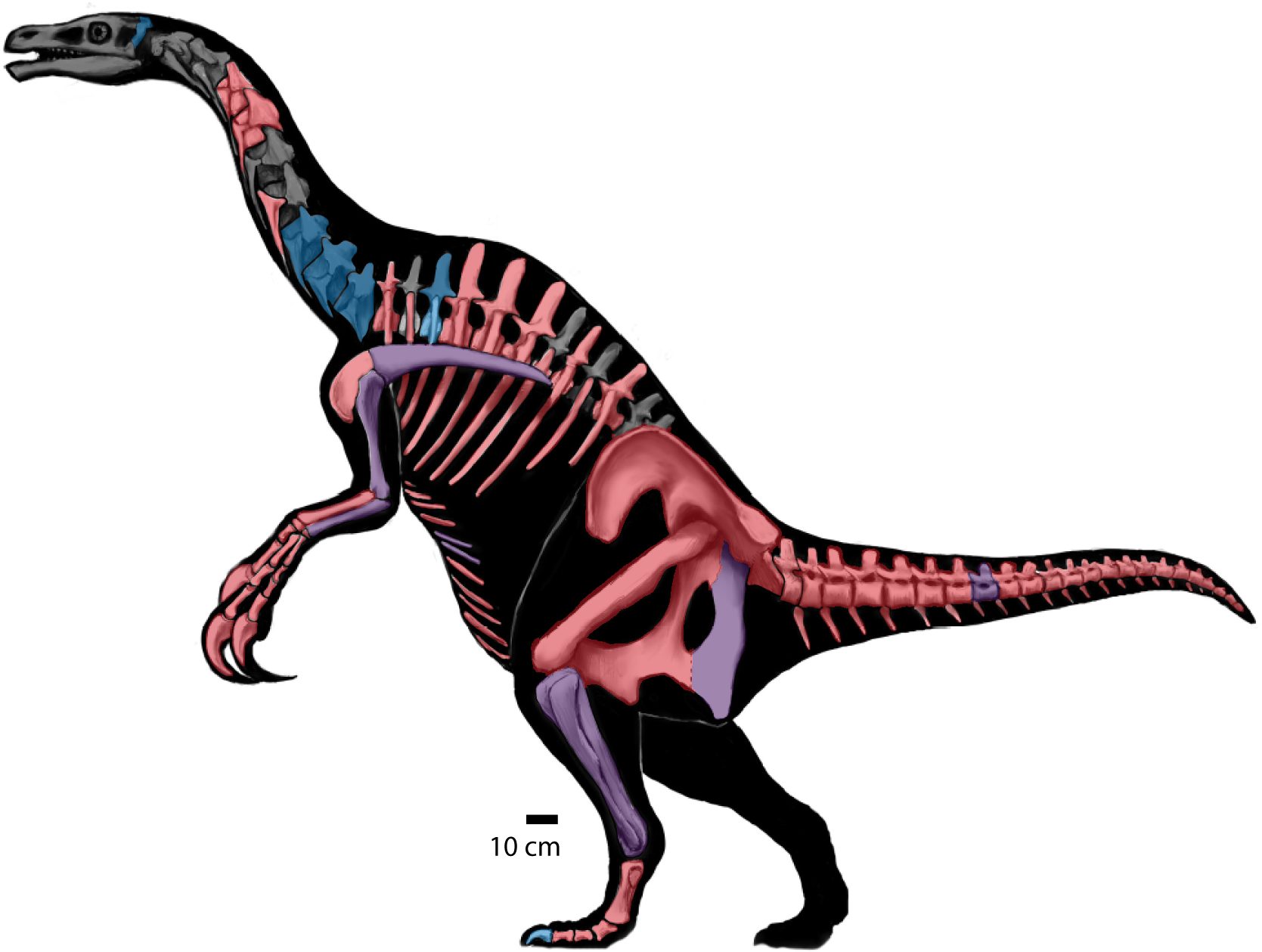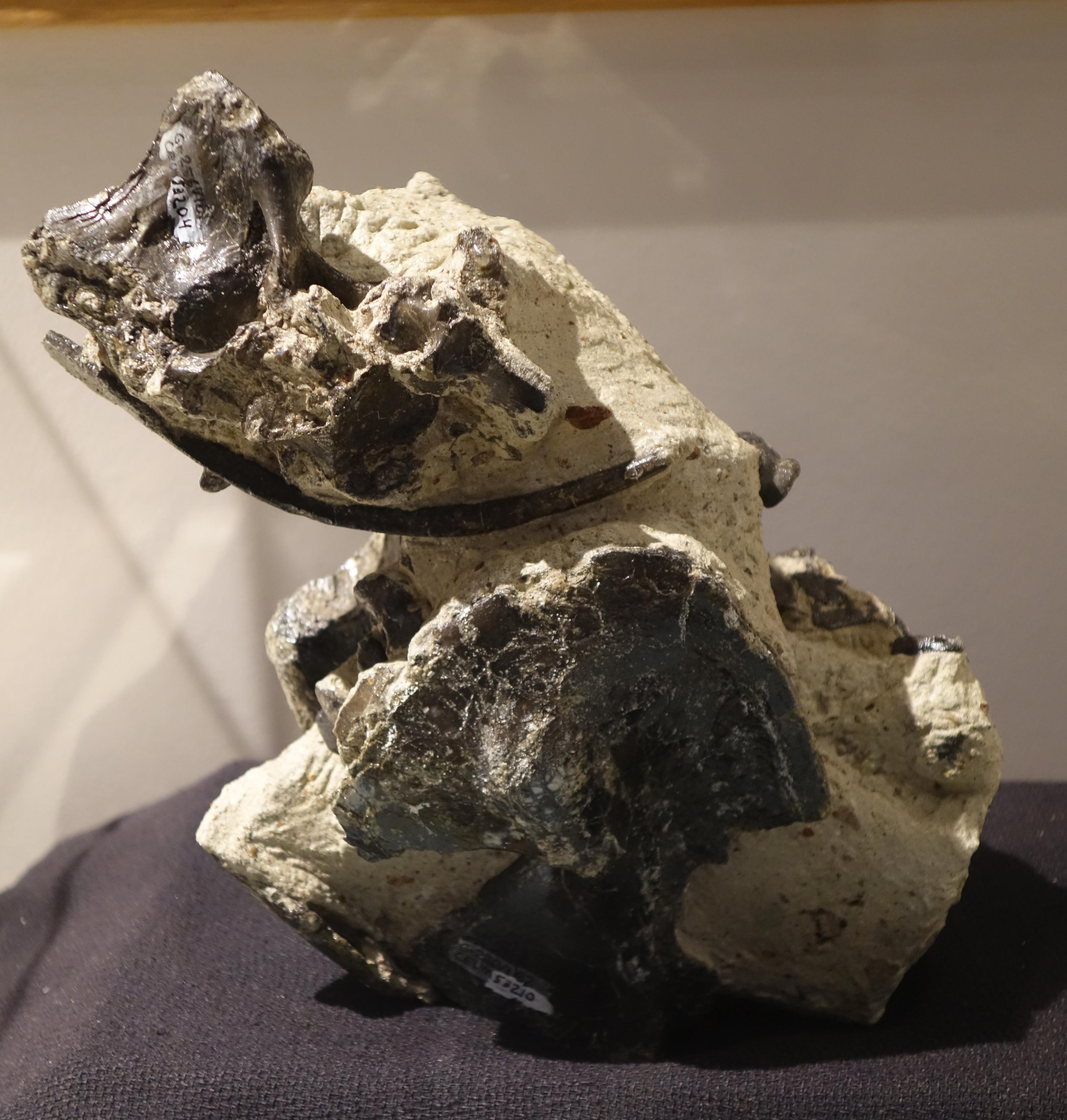|
Therizinosauria
Therizinosaurs (; once called segnosaurs) are an extinct group of large herbivorous Theropoda, theropod dinosaurs whose fossils have been mainly discovered from Cretaceous deposits in Asia and North America. Potential fragmentary remains have also been found in Jurassic deposits of Asia and Europe. Various features of the forelimbs, skull and pelvis unite these finds as both theropods and maniraptorans, making them relatives of birds. The name of the representative genus, ''Therizinosaurus'', is derived from the Ancient Greek , Greek (, 'to reap' or 'scythe')Translated paper and (, 'lizard'). The older representative, ''Segnosaurus'', is derived from the Latin ('slow') and the Greek . History of research [...More Info...] [...Related Items...] OR: [Wikipedia] [Google] [Baidu] |
Segnosaurus
''Segnosaurus'' is a genus of therizinosaurid dinosaur that lived in what is now southeastern Mongolia during the Late Cretaceous, about 102–86 million years ago. Multiple incomplete but well-preserved specimens were discovered in the Gobi Desert in the 1970s, and in 1979 the genus and species ''Segnosaurus galbinensis'' were named. The generic name ''Segnosaurus'' means "slow lizard" and the specific name ''galbinensis'' refers to the Galbin region. The known material of this dinosaur includes the lower jaw, neck and tail vertebrae, the pelvis, shoulder girdle, and limb bones. Parts of the specimens have gone missing or become damaged since they were collected. ''Segnosaurus'' was a large-bodied therizinosaur that is estimated to have been about long and to have weighed about . It would have been bipedal, with the trunk of its body tilted upwards. The head was small with a beak at the tip of the jaws, and the neck was long and slender. The lower jaw was down-turned at t ... [...More Info...] [...Related Items...] OR: [Wikipedia] [Google] [Baidu] |
Therizinosauridae
Therizinosauridae (meaning 'scythe lizards')Translated paper is an extinct family of derived (advanced) therizinosauroid dinosaurs whose fossil remains have been found in mostly Late Cretaceous boundary. Even though representative fossils have only been found throughout Asia and North America, the range of Therizinosauridae is believed to have spanned much of the supercontinent of Laurasia based on several footprints and isolated remains in Europe and Africa. As of 2025, the family Therizinosauridae comprises nine definitive genera. Therizinosauridae was named in 1954 by paleontologist Evgeny Maleev after the large, claw-bearing unguals of the type species ''Therizinosaurus cheloniformis''. Therizinosaurids were generally large and very robustly built animals that had a near Convergent evolution, convergent body plan with the mo ... [...More Info...] [...Related Items...] OR: [Wikipedia] [Google] [Baidu] |
Therizinosaurus
''Therizinosaurus'' (; meaning 'scythe lizard') is a genus of very large therizinosaurid dinosaurs that lived in Asia during the Late Cretaceous period in what is now the Nemegt Formation around 70 million years ago. It contains a single species, ''Therizinosaurus cheloniformis''. The first remains of ''Therizinosaurus'' were found in 1948 by a Mongolian field expedition in the Gobi Desert and later described by Evgeny Maleev in 1954. The genus is only known from a few bones, including gigantic manual unguals (claw bones), from which it gets its name, and additional findings comprising fore and hindlimb elements that were discovered from the 1960s through the 1980s. ''Therizinosaurus'' was a colossal therizinosaurid that could grow up to long and tall, and weigh possibly over . Like other therizinosaurids, it would have been a slow-moving, long-necked, high browser equipped with a rhamphotheca (horny beak) and a wide torso for food processing. Its forelimbs were particularly ... [...More Info...] [...Related Items...] OR: [Wikipedia] [Google] [Baidu] |
Therizinosaurus Arms
''Therizinosaurus'' (; meaning 'scythe lizard') is a genus of very large therizinosaurid Dinosaur, dinosaurs that lived in Asia during the Late Cretaceous Period (geology), period in what is now the Nemegt Formation around 70 million years ago. It contains a single species, ''Therizinosaurus cheloniformis''. The first remains of ''Therizinosaurus'' were found in 1948 by a Mongolian field expedition in the Gobi Desert and later described by Evgeny Maleev in 1954. The genus is only known from a few bones, including gigantic manual unguals (claw bones), from which it gets its name, and additional findings comprising fore and hindlimb elements that were discovered from the 1960s through the 1980s. ''Therizinosaurus'' was a colossal therizinosaurid that could grow up to long and tall, and weigh possibly over . Like other therizinosaurids, it would have been a slow-moving, long-necked, high browser equipped with a rhamphotheca (horny beak) and a wide torso for food processing. Its fo ... [...More Info...] [...Related Items...] OR: [Wikipedia] [Google] [Baidu] |
Enigmosaurus
''Enigmosaurus'' (meaning "Enigma lizard" or "Enigmatic lizard") is a genus of therizinosauroid that lived in Asia during the Late Cretaceous period. It was a medium-sized, ground-dwelling, bipedal herbivore that represents the third therizinosaur taxon from the Bayan Shireh Formation, although it is known from the lower part. The genus is monotypic, including only the type species ''E. mongoliensis'', known from a well preserved pelvis and other tentative body remains. Discovery and naming The holotype, IGM 100/84, was discovered at the Khara Khutul locality in the Bayan Shireh Formation (sometimes called Baynshire Formation or the Baynshirenskaya Svita), southeastern Mongolia, dating from the Late Cretaceous period, and first reported in 1979 on a pelvic comparison with other theropod dinosaurs. At the time, little was known about therizinosaurs. In 1980, it was mentioned again, this time in the new infraorder created by the Mongolian paleontologists Rinchen Barsbold and Altang ... [...More Info...] [...Related Items...] OR: [Wikipedia] [Google] [Baidu] |
Nothronychus
''Nothronychus'' (meaning "slothful claw") is a genus of therizinosaurid theropod dinosaurs that lived in North America during the Late Cretaceous period. The type species, ''Nothronychus mckinleyi'', was described by James Kirkland and Douglas G. Wolfe in 2001. It was recovered near New Mexico's border with Arizona, in an area known as the Zuni Basin, from rocks assigned to the Moreno Hill Formation, dating to the Turonian stage of the Late Cretaceous. A second specimen, described in 2009 as a second species, ''Nothronychus graffami'', was found in the Tropic Shale of Utah, dating between one million and a half million years older than ''N. mckinleyi''. ''Nothronychus'' were bulky herbivorous theropods with wide, sloth-like hip (resembling that of the non-related ornithischians), four-toed feet with all four toes facing forward, elongated necks and prominent arms with sharp claws. Both species were similar in dimensions, but ''N. graffami'' was slightly more robust than ''N. ... [...More Info...] [...Related Items...] OR: [Wikipedia] [Google] [Baidu] |
Falcarius
''Falcarius'' (meaning "sickle cutter") is a genus of primitive therizinosaur dinosaur that lived during the Early Cretaceous period in what is now North America. Its remains were first collected in the Cedar Mountain Formation in 1999, with subsequent findings made during the 2000s. The genus is known from multiple specimens ranging from immature to fully-grown individuals. ''Falcarius'' was a long bipedal herbivore with a small head and an elongated neck and tail. Unlike advanced therizinosaurs, ''Falcarius'' had a propubic pelvis and three-toed feet with a reduced hallux (first digit). ''Falcarius'' is the basal most known definitive therizinosaurian genus, and has been considered a transitional form connecting the typical theropod bodyplan to the unusual morphology of Therizinosauridae. Its description in 2005, following that of the basal therizinosauroid ''Beipiaosaurus'' from the Early Cretaceous of China in 1999, helped clarify the early evolution of the Therizinosauria a ... [...More Info...] [...Related Items...] OR: [Wikipedia] [Google] [Baidu] |
Beipiaosaurus
''Beipiaosaurus'' is a genus of Therizinosauroidea, therizinosauroid theropod dinosaurs that lived in China during the Early Cretaceous in the Yixian Formation. The first remains were found in 1996 and formally described in 1999. Before the discovery of ''Yutyrannus'', ''Beipiaosaurus'' were among the heaviest dinosaurs known from direct evidence to be feathered. ''Beipiaosaurus'' is known from three reported specimens. Numerous impressions of feather structures were preserved that allowed researchers to determine the feathering color which turned out to be brownish. They were relatively small-sized therizinosaurs, measuring long and weighing about in contrast to the advanced and giant ''Segnosaurus'' or ''Therizinosaurus''. The necks of ''Beipiaosaurus'' were shorter than in most therizinosaurs, whose are characterized by elongated necks adapted for Browsing (herbivory), high-browsing. Also, their feet configuration differs from therizinosaurids, having a generic three-toed pe ... [...More Info...] [...Related Items...] OR: [Wikipedia] [Google] [Baidu] |
Alxasaurus
''Alxasaurus'' (; meaning "Alxa League, Alxa lizard") is a genus of Therizinosauroidea, therizinosauroid theropod dinosaurs from the Early Cretaceous (Albian age) Bayin-Gobi Formation of Inner Mongolia. It is known from five specimens, recovered from the Bayin-Gobi in 1988, as part of the China-Canada Dinosaur Project. During their preparation, palaeontologists Dong Zhiming and Dale Russell noted strong similarities to ''Segnosaurus''. In 1993, they described ''Alxasaurus'' and named its type species, ''A. elesitaiensis''. While therizinosaurs had previously been tentatively seen as late-surviving Basal (phylogenetics), basal Sauropodomorpha, sauropodomorphs, the description of ''Alxasaurus'' lent credence to the idea that they were instead highly derived Coelurosauria, coelurosaurs. While outside of Therizinosauridae itself, ''Alxasaurus'' had many of the traits characteristic of derived therizinosaurs, such as an abbreviated tail, shortened Metatarsal bones, metatarsals and bro ... [...More Info...] [...Related Items...] OR: [Wikipedia] [Google] [Baidu] |
Lingyuanosaurus
''Lingyuanosaurus'' is a genus of therizinosaurian theropod from the Early Cretaceous of Liaoning Province, China. The type and only species is ''L. sihedangensis''. It was uncovered within one of the formations that make up the Jehol biota, although the exact geological formation — and therefore also its precise geological age — is unknown. Discovery The holotype of ''Lingyuanosaurus'', given the designation IVPP V 23589, was discovered at a fossil locality near a town called Sihedang. The specimen was recovered inside of seven rock slabs of varying sizes. The locality is just outside of the city of Lingyuan in Liaoning Province. The precise age of this locality is uncertain. The strata from which the holotype was found are a part of the Jehol Group, but it is not known for certain if they belong to the Yixian Formation or to the Jiufotang Formation. Given the fact that the entire specimen was found in a one-square-meter area, no other fossils were found in proximity ... [...More Info...] [...Related Items...] OR: [Wikipedia] [Google] [Baidu] |
Fukuivenator
''Fukuivenator'' ("hunter of Fukui Prefecture") is an extinct genus of maniraptoran theropod dinosaur from the Early Cretaceous of Japan. Discovery and naming The type species ''Fukuivenator paradoxus'' was named and described in 2016 by Yoichi Azuma, Xu Xing (paleontologist), Xu Xing, Masateru Shibata, Soichiro Kawabe, Kazunori Miyata and Takuya Imai. The generic name combines a reference to the Fukui prefecture with Latin ''venator'', "hunter". The specific name (zoology), specific name refers to the paradoxical combination of traits shown by the species. The rocks in which the skeleton of ''Fukuivenator'', holotype FPDM-V8461, was found in August 2007 belong to the Kitadani Formation, which is probably of Barremian or Aptian age. Radiometric dating of nearby rock units has given this formation an estimated age of somewhere between 127 and 115 million years old. The holotype consists of a partial skeleton with skull. The skeleton of ''F. paradoxus'' is currently the most c ... [...More Info...] [...Related Items...] OR: [Wikipedia] [Google] [Baidu] |
Maniraptora
Maniraptora is a clade of coelurosaurian dinosaurs which includes the birds and the non-avian dinosaurs that were more closely related to them than to ''Ornithomimus velox''. It contains the major subgroups Avialae, Dromaeosauridae, Troodontidae, Oviraptorosauria, and Therizinosauria. ''Ornitholestes'' and the Alvarezsauroidea are also often included. Together with the next closest sister group, the Ornithomimosauria, Maniraptora comprises the more inclusive clade Maniraptoriformes. Maniraptorans first appear in the fossil record during the Jurassic Period (see ''Eshanosaurus''), and origin of birds#Phylogeny, survive today as living birds. Description Maniraptorans are characterized by long arms and three-fingered hands (though reduced or fused in some lineages), as well as a "half-moon shaped" (semilunar bone, semi-lunate) bone in the wrist (Carpal bones, carpus). In 2004, Tom Holtz and Halszka Osmólska pointed out six other maniraptoran characteristics relating to specific de ... [...More Info...] [...Related Items...] OR: [Wikipedia] [Google] [Baidu] |











